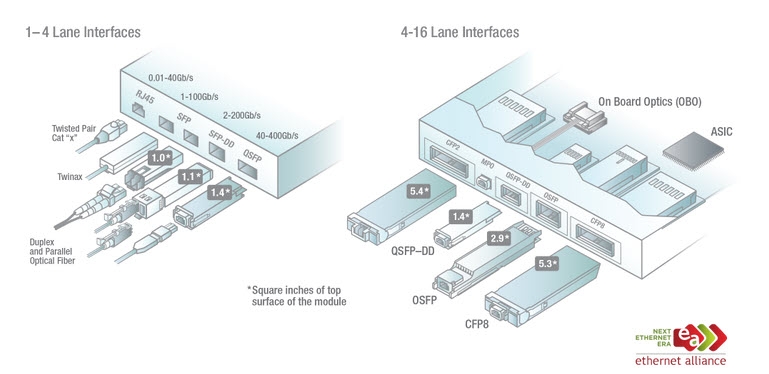When is it Time to Deploy 200G and 400G Ethernet in Your Data Center Network?
When is it Time to Deploy 200G and 400G Ethernet in Your Data Center Network?
The rapid evolution of data center networking has network engineers asking: when is the right time to transition to 200G and 400G Ethernet? Although 100G has served data centers well, exponential growth in data traffic, cloud computing, AI workloads, and IoT necessitate higher bandwidths. Let's explore what is driving the adoption of 400G Ethernet, particularly focusing on hardware from vendors like Juniper, Arista, Nokia, and Cisco, and discuss how to address common challenges in this transition.
Signs It’s Time to Deploy 200G or 400G
1. Capacity Exhaustion: If 100G links in your spine-leaf architecture frequently hit capacity limits, it's a clear signal to upgrade. Oversubscription rates in the network may be reducing performance for latency-sensitive applications, indicating a need for higher-speed links.
2. Scalability Challenges: As you add more servers or devices, you may find your current network architecture struggling to support additional traffic. If adding more 100G ports leads to complexities in network management, it's time to consider the fewer but faster 400G connections.
3. AI and ML Workloads: Networks supporting AI and machine learning workloads, especially those involving GPU clusters, benefit significantly from the high bandwidth and low-latency capabilities of 400G Ethernet.
4. High Latency and Jitter: Persistent issues with network latency and jitter in real-time applications (e.g., financial trading, video conferencing) indicate your current bandwidth may be insufficient. Higher-speed Ethernet can help minimize these problems.
5. Future-Proofing the Network: If you’re planning a network refresh and want to future-proof for upcoming technologies like 5G, IoT, or augmented reality (AR) applications, moving to 200G or 400G is a strategic step.
Today's Hardware Options for 400G Ethernet
Juniper Networks
QFX5220: A versatile switch offering 32 ports of 400G or up to 128 ports of 100G. It’s designed for high-performance data centers and provides flexible port configurations. The QFX5220 is ideal for spine, leaf, and edge applications where network capacity is a priority.
Arista Networks
7388X5 Series: Known for high density, this series can support up to 64 ports of 400G or 128 ports of 100G. Arista's switches leverage its EOS (Extensible Operating System) for robust network automation, telemetry, and zero-touch provisioning.
Nokia
7750 SR-1se: Part of the 7750 Service Router family, it offers a mix of 100G, 200G, and 400G ports. Nokia’s switches are equipped with deep buffering and carrier-grade reliability, making them suitable for complex, high-demand data center environments.
Cisco
Nexus 9300-GX2: Features up to 32 ports of 400G. Cisco’s Nexus series supports advanced telemetry and automation, making it a strong option for scalable, flexible network architecture.
Addressing Pain Points When Upgrading to 400G
1. Power Consumption and Cooling: Higher-speed links generally consume more power and generate more heat. When deploying 400G hardware, it's crucial to ensure adequate power and cooling capacity in the data center. Newer switches often feature energy-efficient designs, but infrastructure adjustments may still be required.
2. Cabling and Optics: Transitioning to 400G often involves adopting new cabling standards, such as QSFP-DD (Quad Small Form Factor Pluggable Double Density) or OSFP (Octal Small Form Factor Pluggable) optics. This can be a significant cost factor, so careful planning is needed to optimize the use of existing fiber infrastructure.
3. Cost Management: While 400G hardware represents a significant investment, it can be cost-effective in the long run by reducing the number of ports, cables, and management overhead. Performing a cost-benefit analysis based on current and projected network loads can help justify the expense.
4. Network Management Complexity: 400G introduces more complex routing, monitoring, and telemetry requirements. Modern switches from vendors like Arista (using EOS) and Cisco (with its NX-OS) come with built-in network automation and telemetry tools that help manage these complexities.
5. Compatibility with Existing Infrastructure: When transitioning to 400G, consider how it will integrate with the current network infrastructure. Many 400G switches support backward compatibility with 100G and 200G, providing a phased upgrade path without a complete overhaul.
Moving to 200G or 400G Ethernet is a strategic decision driven by increasing network demands, technological advancements, and the need for future-proofing. The right time to upgrade depends on specific network pain points, capacity needs, and the desire to support next-generation applications. Modern switches from vendors like Juniper (QFX5220), Arista (7388X5), Nokia (7750 SR-1se), and Cisco (Nexus 9300-GX2) provide the necessary features and scalability to make this transition smoother.
By recognizing the signs that your network requires a higher bandwidth solution and choosing the right hardware, network engineers can address pain points effectively, optimizing performance for current and future demands.
At Terabit Systems, we remain committed to providing cutting-edge networking solutions tailored to our customers' needs. Call us at +1 (415) 230-4353 or click here to connect for a quote or to learn more.

